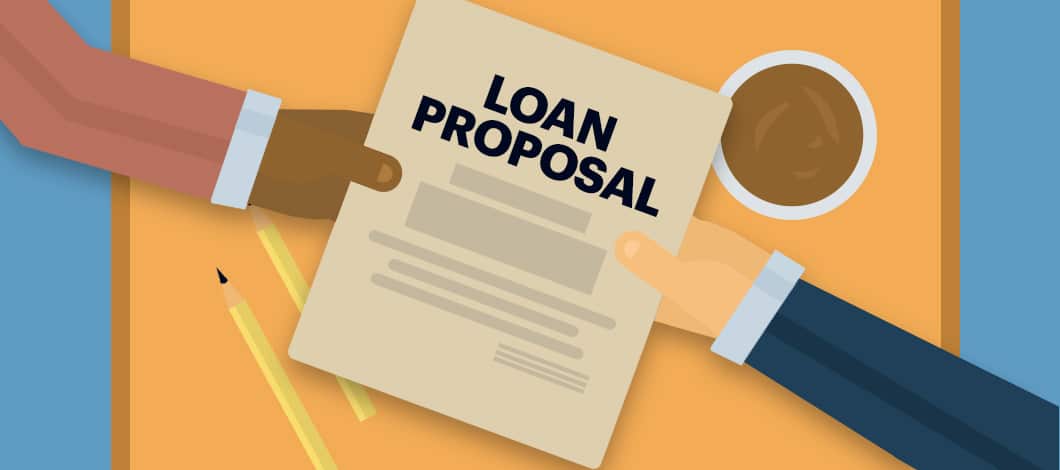Knowing how to prepare a business loan proposal can help you get the financing you need.
With that in mind, here’s how to write a winning proposal. We’ll walk you through the loan approval process and cover what to include in your proposal. Moreover, we’ll give you some tips on how to present it effectively.
The Loan Proposal Process
When you apply for a business loan, the application and approval process typically involves several steps:
- Prequalifying (preapproval): Many lenders begin by gathering preliminary information such as basic identifying details, your business revenue level and credit score to screen out applicants who don’t qualify for a loan
- Application: If you meet prequalifying criteria, your lender may have you complete a full application process, which can include submitting documentation of your finances and undergoing a credit check
- Underwriting: Your application is reviewed by a human or automated underwriter to evaluate how much of a risk your lender would take on by extending you a loan, an assessment based on considerations such as your credit history, your ability to repay your loan and your collateral
- Approval: If the underwriter’s evaluation indicates you are an acceptable credit risk, your lender will approve your loan and send you a formal commitment letter offering you the opportunity to accept their loan terms
- Close: In the closing stage, all parties signal their acceptance of the loan terms by signing finalized legal documents
The specifics of these steps may vary from one lender to another. The amount of time involved to process your application also may vary. When you’re applying for a loan guaranteed by the Small Business Administration (SBA), the approval process may take 60 to 90 days. With some online lenders, the process may be shortened to a few days or even hours.

A Loan Proposal Template: What to Include
Your loan proposal should answer 4 basic questions your lender needs to know, according to the SBA:
- How much money are you requesting?
- Also, how will you use the money?
- How will you repay the money?
- What will you do if you can’t repay it?
To answer these questions, your proposal normally should include the following items:
- An executive summary concisely describing the highlights of your proposal
- A profile of your business introducing your company’s mission, market, customers and history
- A description of your company’s management personnel and experience
- How much you’re asking for
- What repayment terms you’re asking for
- Your financial projections for at least 1 year or until a positive cash flow will be achieved
- Business financial statements from the past 3 years and a current interim financial statement, or projected statements for new companies
- Personal financial statements from the past 90 days for owners with more than 20% interest in the company, plus tax returns from the past year to 3 years
- Your equity investment in your business
- Collateral
- Other relevant documents such as business licenses, articles of incorporation or leases
These elements typically are combined together into an integrated loan business plan format. Different lenders prefer different formats for how you should present information, and you should follow the instructions from your lender. But generally speaking, most formats follow similar outlines. The SBA’s guidelines on how to make a business plan for a loan represent a standard format that you can modify to meet your lender’s guidelines.
Follow This Outline
The SBA recommends that you follow this outline for a commercial loan business plan:
- Introduction (3-5 pages) that includes a cover page, an executive summary of 1-2 pages and a table of contents
- Market analysis (9-22 pages) demonstrating your knowledge of your industry and your market niche
- Company description (1-2 pages) that summarizes the nature of your business and why you believe your business model will succeed
- Organization and management description (3-5 pages) that describes your company’s organizational structure, ownership information, management resumes and compensation and board of directors’ qualifications
- Marketing and sales strategies (4-6 pages) that lay out your strategy for reaching your target market and selling your product or service
- Product or service description (4-10 pages) regarding what you sell, its benefits and relevant intellectual property information such as patents or nondisclosure agreements
- Equity investment and funding request (2-4 pages) detailing how much you’re investing in your business and how much funding you need, presented with reference to your financing plan
- Financial information (12-25 pages) that includes data on your company’s owners, business financial statements, any debts, financial projections and supporting visual aids such as charts or graphs
- Appendices that support details fleshing out your proposal, such as detailed market research data
The financial information section of your proposal weighs heavily on the lender’s evaluation of your application because it indicates your ability to repay your loan. For best results, develop this section in consultation with an accounting professional.
If you need help developing the other sections of your proposal, you can find assistance through SCORE, a network of volunteer business mentors that partners with the SBA.

How to Make a Loan Proposal Pitch
How you present your proposal can affect your impression on your lender. Here are some tips for making a more persuasive pitch:
- Collect all the information you’ll need before filling out an application
- Check your credit score before submitting an application
- If you’re working through an online provider, read and follow their instructions carefully
- If you’re working with a local lender, package your proposal in a 3-ring binder, with the main sections divided by labeled tabs
- Include all supporting documents, especially financial documents and market research
- Make an appointment with your prospective lender by contacting their commercial loan department, providing a brief 1-minute summary of your business and how large a loan you’re requesting and asking for a 5-minute appointment
- Show up on time for your appointment
- Go through each section of your proposal by highlighting one key item
- After 5 minutes, thank your lender’s representative for their time, but be prepared to stay and answer questions
- Consider hiring a videographer to help you create a video summary of your proposal 3 to 5 minutes long to email your lender’s representative ahead of your meeting
- If your lender offers you a loan, review the language of your loan with your attorney, but don’t take more than 2 or 3 days
Following these tips will help you convey a professional impression and persuade your lender that you are a safe loan risk.
Create an Effective Loan Proposal
To be effective, a loan proposal must persuade your lender of your ability to repay what you’re asking to borrow. Knowing how to prepare a business loan proposal is key. To achieve your objective, your proposal should cover a number of essential items. This includes business and personal financial information as well as other relevant information about your company.
Packaging this information together with a business plan will help organize your presentation. This shows your lender that you have a viable strategy for generating the revenue to repay your loan.
When you’re ready to apply, Fast Capital 360 works with a network of lenders to facilitate business loans of up to $1 million. Check out our loan options by filling out our free, no-obligation prequalifying form to see what types of financing may be available to you.










